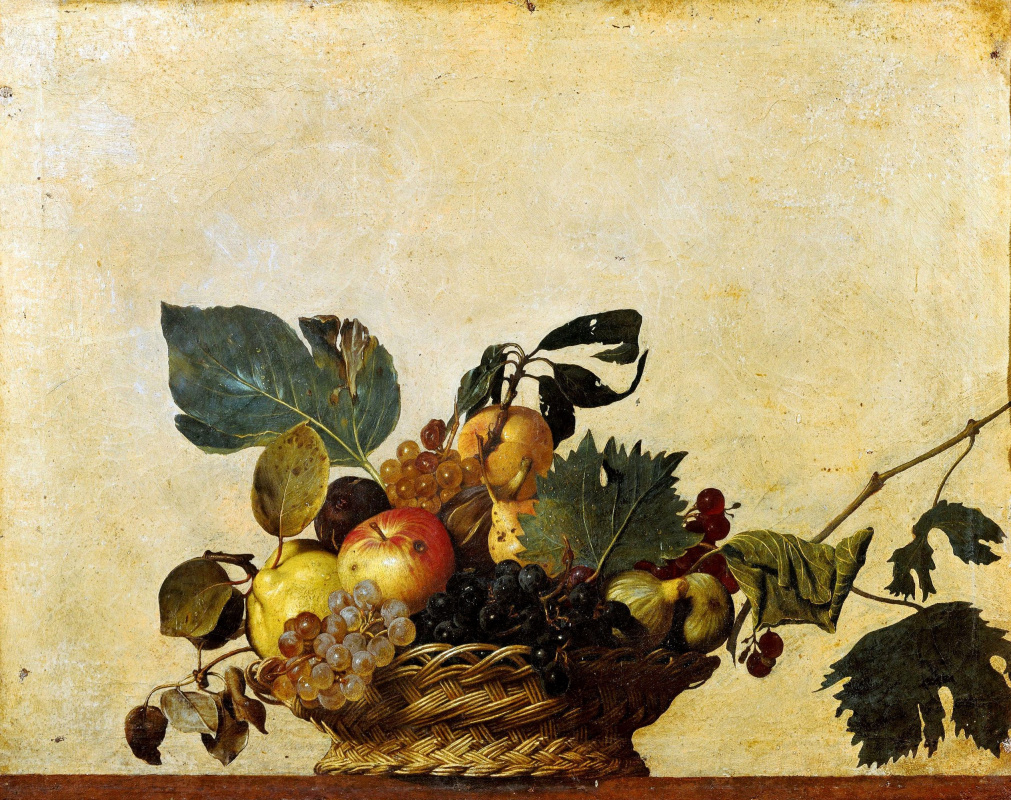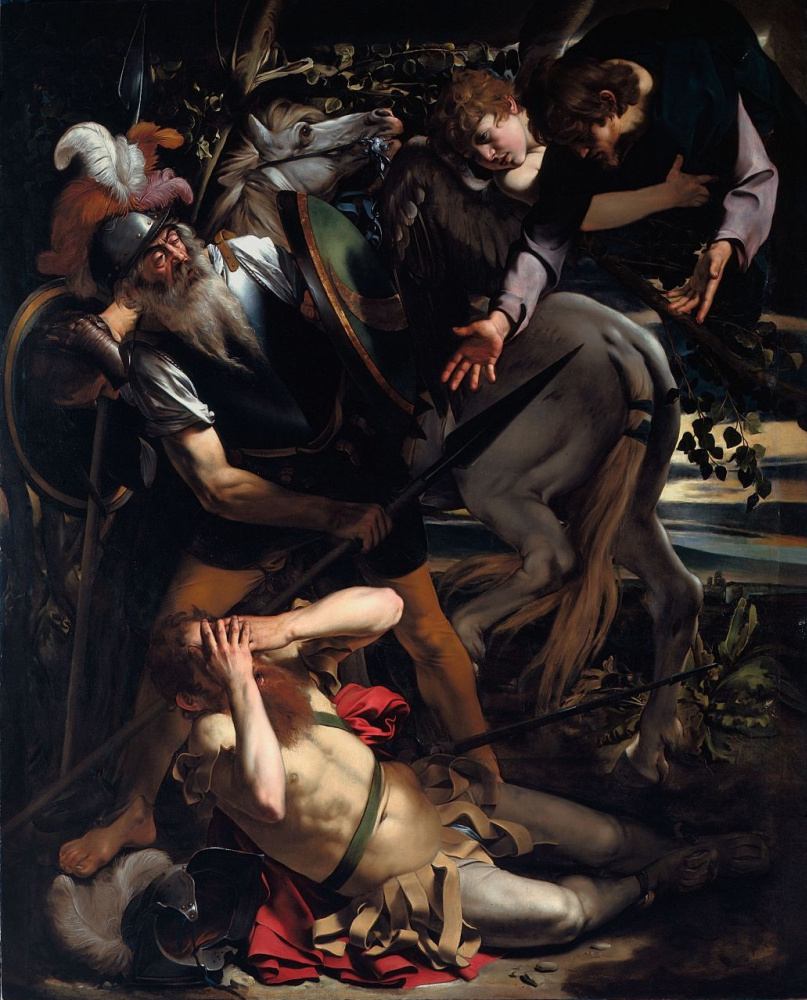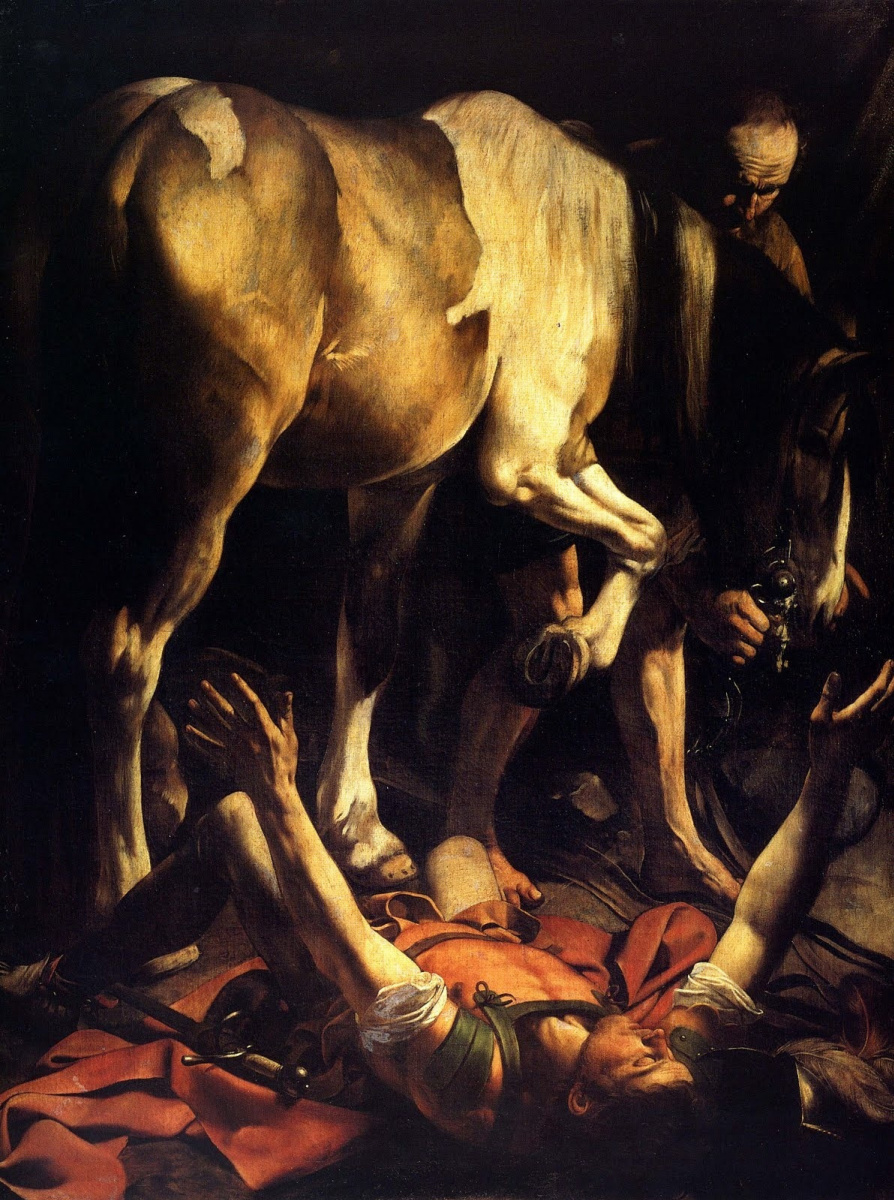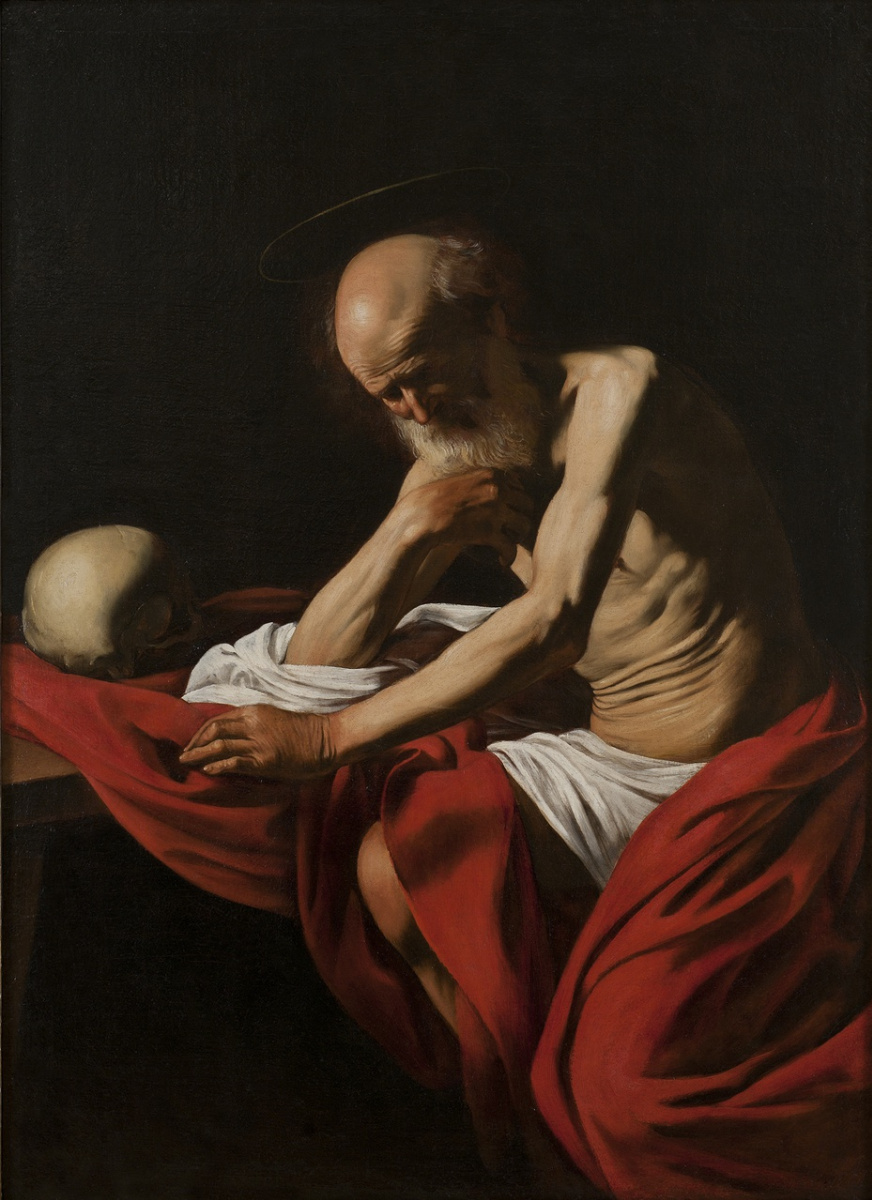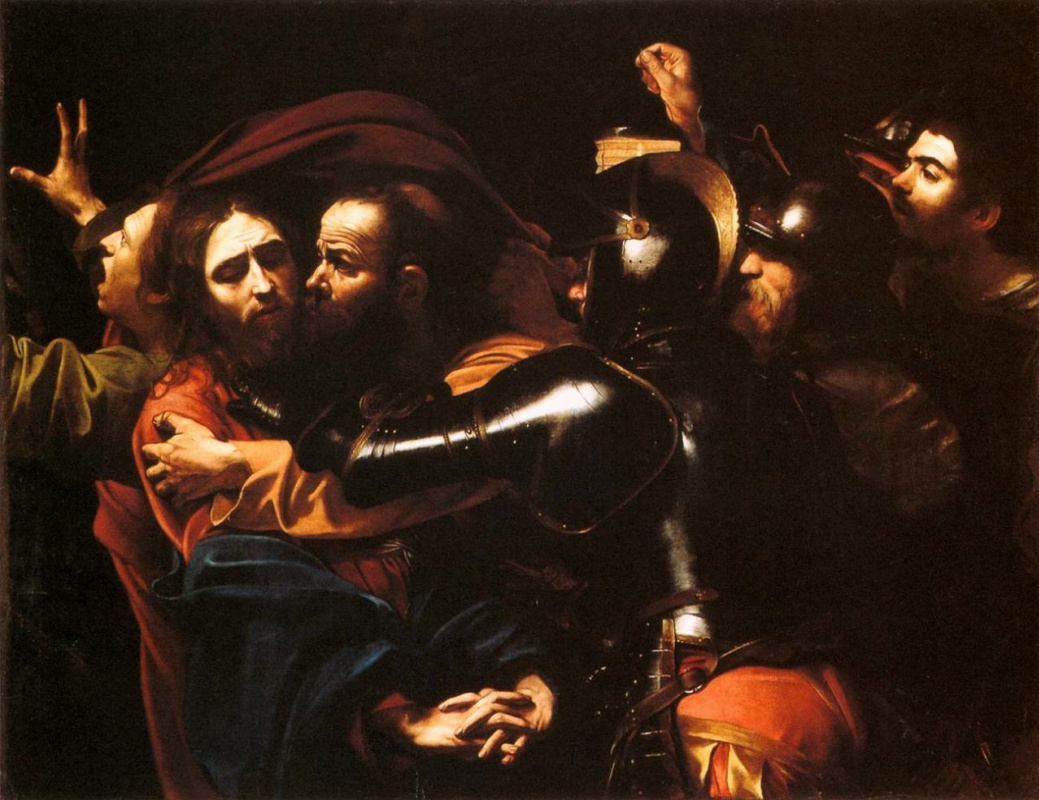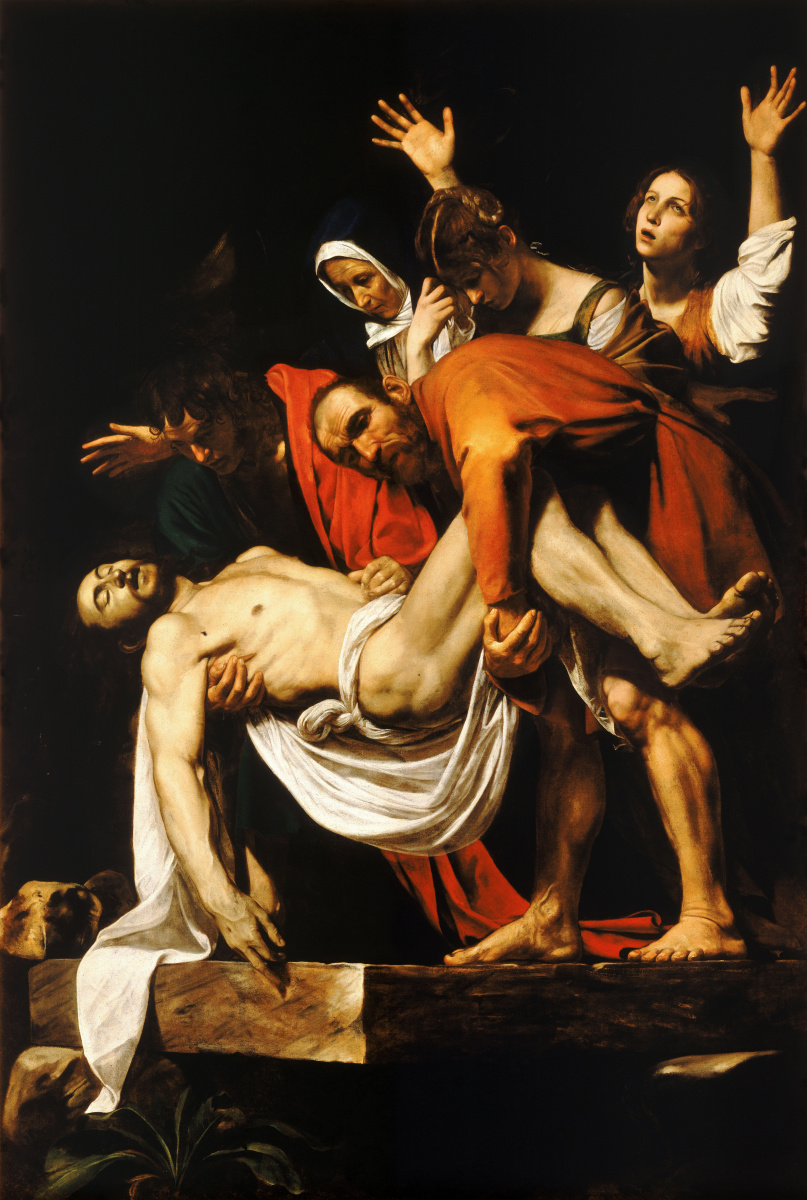He is a great painter. He is one of the artists who changed the pictorial art. Everybody who has ever got in touch with fine art should know the oeuvre of this artist. Maybe, you heard that artists of his time cursed him for his naturalism, and ordinary people were horrified to know that the models for his paintings of saints were vagrants and prostitutes. He was an ill-tempered, violent, touchy and provocative man who once killed a man among the numerous brawls. He liked grapes and he gave his young men models bunches of grapes to pose for his paintings, and he loved those young man as well. His dramatic use of light appeared to be the principal guide for future photographers. His full name was Michelangelo Merisi (Michele Angelo Merigi or Amerighi) da Caravaggio. We did our best to offer you some rare facts about this man of genius and his oeuvre.
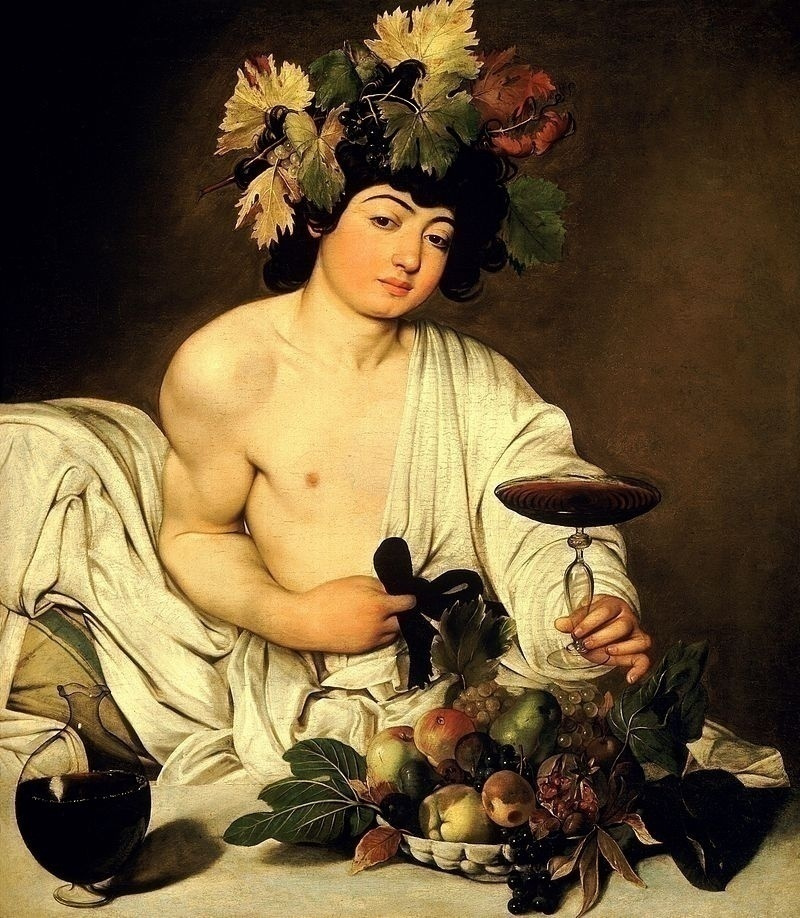
Fruit basket
1596, 46×64 cm
Death was a good color on him
Caravaggio was buried in July, 2014 in the tiny San Sebastiano cemetery in Porto Ercole in Toscana, the place where he died at 38 from syphilis in 1610. You could guess that 400 years ago hardly somebody could say a good word about him. His talent was obvious even when he was alive, though the attitude to him was negative because of his way of life with gambling debts, brawls, debauches, murder, jails and jailbreaks. However, now that Caravaggio’s suspected bones had been reburied, a park was established around his grave.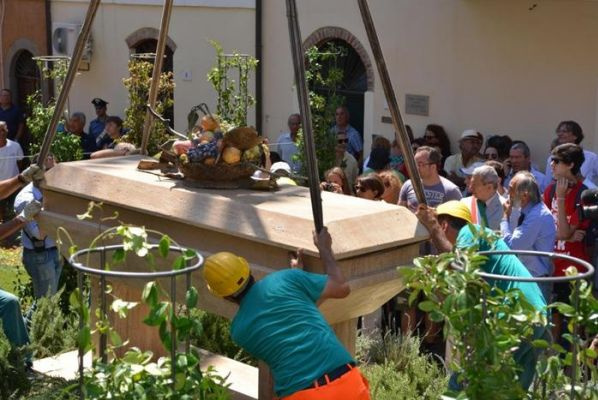
Instead of a wreath, a basket with fruit resembling the artist’s "Basket of Fruit" was put on the coffin with the suspected bones of Caravaggio.
Apropos, Caravaggio but not Dutch artists, is considered to be the author of the first still life.
The DNA test proved the bones belonged to Caravaggio; they had been found at the cemetery in Porto Ercole in Toscana four years before the funeral, in 2010, where he had rested in peace since his actual death, though the well-deserved funeral ceremony had not been held. Milan authorities initiated the ceremony of reburial; the genius is assumed to be born there. The motive is clear, the Caravaggio’s grave could appeal to a great number of tourists and turn into a steady source of income.
Caravaggio could have supported the idea to be disrupted for a great cause, even being dead. At least once the artist did the same, it was when he worked on the Raising of Lazarus. To make this painting realistic, the artist had a freshly buried body exhumed. Rumors had it that the artist’s models refused to keep hold the dead body as Caravaggio requested, because it was against God and disgusting. Caravaggio took his knife and threatened to send them to the free grave, and the models had to obey.
Caravaggio could have supported the idea to be disrupted for a great cause, even being dead. At least once the artist did the same, it was when he worked on the Raising of Lazarus. To make this painting realistic, the artist had a freshly buried body exhumed. Rumors had it that the artist’s models refused to keep hold the dead body as Caravaggio requested, because it was against God and disgusting. Caravaggio took his knife and threatened to send them to the free grave, and the models had to obey.

Rough and ready masterpieces
Art historians have still not found Caravaggio’s single study of his famous multi-figured compositions. His life was hectic and short though he had produced so many pieces of art that we could figure he had died when he would have been an old righteous man (not to mention the lost artworks). Obviously, the artist could produce his complex multi-figured compositions right on the canvas, without sketching. Maybe it was to the good. It sometimes happens that the finished painting appears to be lifeless after the artist’s attempts to conquer perfectionism and put all inspiration into one’s sketches.
The Conversion of Saint Paul
1600, 237×189 cm
The beloved artist of the Hollywood
The Appeal Of St. Saul
1601, 230×175 cm
Stunning psychological and dramatic power of the artworks by Caravaggio is attained due to a special light painting technique he applied in them; the source of light is almost not seen but it is obviously of unnatural origin and located above the heads of the subjects, bringing into sharp focus their figures, faces and gestures, thus focusing on their natures and emotions. This expressive lighting was used not only to emphasize the volume (nowadays the so-called 3D effect), but mainly to stir emotions, as it is currently used on theatre stages and in Hollywood movies; at least, people make attempts to imitate this technique. The cameramen who have succeeded to achieve the effect, normally gain nomination for Oscar award.
Saint Jerome in Thought
1606, 118×81 cm
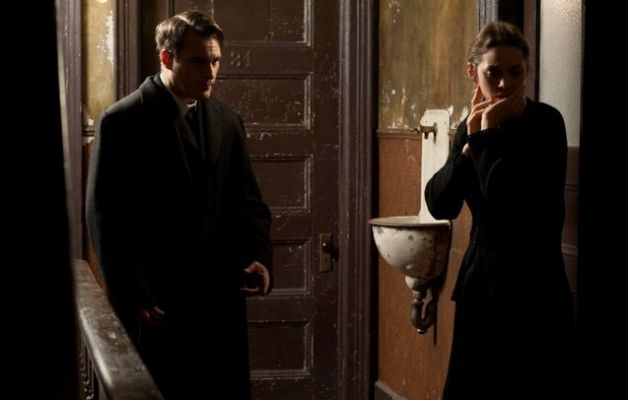
Leftwards is the scene from the movie The Immigrant (2013) by James Gray, an American film maker, whose parents decamped from Ukraine. Before shooting his new movie he takes the cameramen to museums housing the artworks by Caravaggio, to demonstrate them the way it must be done. The contrast of light and shade, the same as in the picture to the left, is called chiaroscuro.
Martin Scorsese, an American director, producer, screenwriter, and film historian, is the other admirer of Caravaggio. According to Scorsese, Caravaggio "… sort of pervaded the entirety of the bar scenes in Mean Streets. He was there in the way I wanted the camera movement, the choice of how to stage a scene. It’s basically people sitting in bars, people at tables, people getting up." "He would have been a great film-maker, there’s no doubt about it." Figures of the people hanging out in somber New York bars in the Mean Streets by Scorsese resemble the images in the The Calling of St. Matthew by Caravaggio.
Look at the scenes from the movie the Goodfellas (1990) by Scorsese, the titles would have included Caravaggio as a director of photography.
Martin Scorsese said that Caravaggio taught him how to tell stories: "He was choosing a moment that was not the absolute moment of the beginning of the action. You come upon the scene midway and you’re immersed in it." So, a good movie maker is to have a talent to begin his narration from the point the viewer could not but be captured with the theme.
The taking of Christ into custody
1602, 169×133 cm
MARTIN SCORSESE said that everything he knows he has got to know looking at the paintings by Caravaggio.
Art icon by Caravaggio
The most popular artwork by Caravaggio is likely the one below:
The burial of Christ (the entombment)
1603, 300×203 cm
The elbow of Nicodemus is about to make a hole in the canvas. Look at the stone slab, which makes its appearance in the picture with terrifying power. The cadaver-bearers would have to be more careful; they could lose their balance and fall down in the grave. The faces of the mourners express the same emotions as the ordinary people could have during the same ceremony, both the peers of Caravaggio and our contemporaries. The classical religious theme has never been so earth-down and realistic as produced by Caravaggio. Illustrating the Bible artists would refuse depicting schemes instead of people at any time thereafter. Rubens and Cézanne, Fragonard and Géricault and a great deal of other painters copied the famous artwork by Caravaggio.
Without Caravaggio’s innovations, as the great Italian art writer ROBERTO LONGHI (1890—1970) once noted, "Ribera, Vermeer, La Tour and Rembrandt could never have existed… and the art of Delacroix, Courbet and Manet would have been utterly different."






